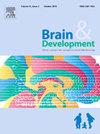自闭症谱系障碍儿童基于EEG微状态的静态和动态脑功能网络差异及tDCS干预调节
IF 1.3
4区 医学
Q4 CLINICAL NEUROLOGY
引用次数: 0
摘要
自闭症由于其异常的大脑网络功能而引起了人们的广泛关注。seeg微状态是休息时短暂、稳定的大脑活动模式,持续80-120毫秒,然后迅速过渡到新的状态。基于微观状态构建静态脑功能网络,并利用模糊熵对静态脑功能网络进行量化,构建动态脑功能网络。该技术从微观状态静态功能连通性和动态时间变异性两个角度全面评估了自闭症谱系障碍(ASD)儿童和典型发育(TD)儿童大脑网络的差异。这些特征被用于支持向量机分类模型来区分ASD儿童。此外,采用该方法还评估了经颅直流电刺激(tDCS)对ASD儿童脑功能网络的影响。结果ASD组儿童微状态A的静态功能连通性显著低于TD组,而ASD组儿童微状态D的静态功能连通性显著高于TD组。ASD组全脑微态A、B、C、D的动态功能连通性显著降低。基于这些特征的支持向量机(SVM)分类准确率为96.33%。此外,经tDCS干预后,ASD儿童在微观状态a和C中表现出静态功能连通性增加的趋势,在微观状态a、B和d中表现出动态功能连通性增加的趋势。结论ASD和TD患儿在静态和动态脑网络方面存在显著差异。取得了优异的分类效果。此外,还发现tDCS干预改变了ASD儿童的静态和动态脑网络。本文章由计算机程序翻译,如有差异,请以英文原文为准。
EEG microstate-based static and dynamic brain functional network differences in autism spectrum disorder children and tDCS interventional modulation
Background
Autism has garnered significant attention due to its abnormal brain network function.
Methods
EEG microstates are brief, stable patterns of brain activity during rest, lasting 80–120 milliseconds before rapidly transitioning to new configurations. A static brain functional network was constructed based on microstates, and the static brain functional network was further quantified using fuzzy entropy to build a dynamic brain functional network. The techniques thoroughly assessed how children with autism spectrum disorder (ASD) and typically developing (TD) brain networks differed from two angles: microstate static functional connectivity and dynamic temporal variability. These features were used in a support vector machine classification model to distinguish ASD children. Additionally, the impact of transcranial direct current stimulation (tDCS) on the brain functional network of ASD children was also assessed using this approach.
Results
The static functional connectivity of microstate A in ASD children was significantly lower than that of TD children, while the static functional connectivity of microstate D was significantly higher in the ASD group. The dynamic functional connectivity of microstates A, B, C, and D in the ASD group was significantly reduced across the whole brain. The support vector machine (SVM) classification accuracy based on these features was 96.33 %. Furthermore, after tDCS intervention, ASD children showed a trend of increased static functional connectivity in microstates A and C, as well as a tendency for increased dynamic functional connectivity in microstates A, B, and D.
Conclusion
A notable disparity was observed between children diagnosed with ASD and TD regarding their static and dynamic brain networks. The excellent classification results were achieved. Furthermore, it was discovered that the tDCS intervention altered the children with ASD's static and dynamic brain networks.
求助全文
通过发布文献求助,成功后即可免费获取论文全文。
去求助
来源期刊

Brain & Development
医学-临床神经学
CiteScore
3.60
自引率
0.00%
发文量
153
审稿时长
50 days
期刊介绍:
Brain and Development (ISSN 0387-7604) is the Official Journal of the Japanese Society of Child Neurology, and is aimed to promote clinical child neurology and developmental neuroscience.
The journal is devoted to publishing Review Articles, Full Length Original Papers, Case Reports and Letters to the Editor in the field of Child Neurology and related sciences. Proceedings of meetings, and professional announcements will be published at the Editor''s discretion. Letters concerning articles published in Brain and Development and other relevant issues are also welcome.
 求助内容:
求助内容: 应助结果提醒方式:
应助结果提醒方式:


